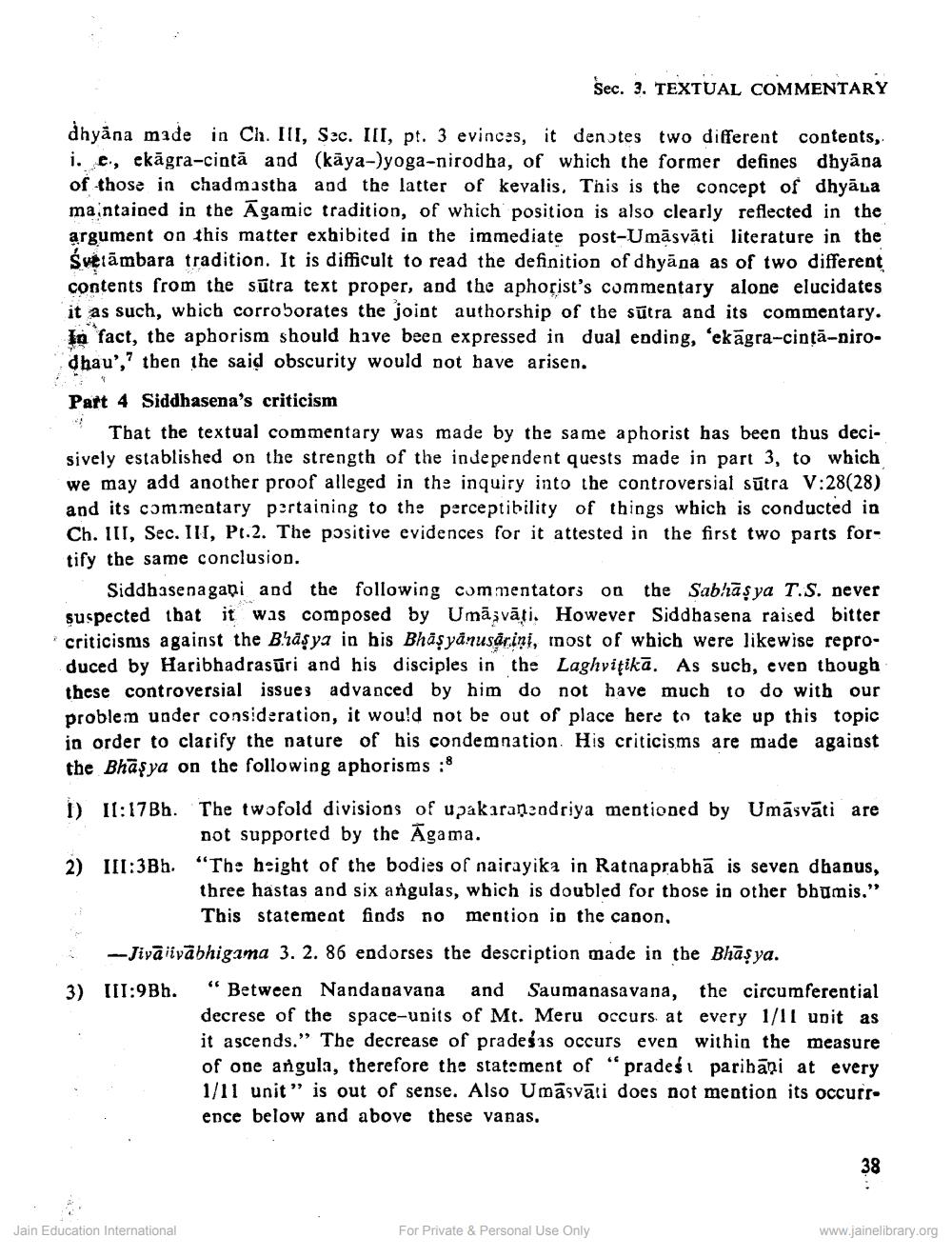________________
Sec. 3. TEXTUAL COMMENTARY
dhyana made in Ch. III, Sec. III, pt. 3 evinces, it denotes two different contents, i. e, ekāgra-cintā and (kāya-)yoga-nirodha, of which the former defines dhyāna of those in chadmastha and the latter of kevalis. This is the concept of dhyāla maintained in the Āgamic tradition, of which position is also clearly reflected in the argument on this matter exhibited in the immediate post-Umāsvāti literature in the svetāmbara tradition. It is difficult to read the definition of dhyāna as of two different contents from the sūtra text proper, and the aphorist's commentary alone elucidates it as such, which corroborates the joint authorship of the sūtra and its commentary. In fact, the aphorism should have been expressed in dual ending, 'ekāgra-cinta-niro. dhau', then the said obscurity would not have arisen. Part 4 Siddhasena's criticism
That the textual commentary was made by the same aphorist has been thus decisively established on the strength of the independent quests made in part 3, to which we may add another proof alleged in the inquiry into the controversial sūtra V:28(28) and its commentary pertaining to the perceptibility of things which is conducted in Ch. III, Sec. III, Pt.2. The positive evidences for it attested in the first two parts fortify the same conclusion.
Siddhasenagapi and the following commentators on the Sabrāşya T.S. never suspected that it was composed by Umājvāti. However Siddha sena raised bitter criticisms against the Bhasya in his Bhasyanusarini, most of which were likewise reproduced by Haribhadrasūri and his disciples in the Laghviţikā. As such, even though these controversial issues advanced by him do not have much to do with our problem under consideration, it would not be out of place here to take up this topic in order to clarify the nature of his condemnation. His criticisms are made against the Bhāşya on the following aphorisms :8
1) 11:17Bh. The twofold divisions of upakaranendriya mentioned by Umāsvāti are
not supported by the Agama. 2) III:3Bh. "The height of the bodies of nairayika in Ratnaprabhā is seven dhanus,
three hastas and six angulas, which is doubled for those in other bhumis."
This statemeat finds no mention in the canon, - Jivāiivābhigama 3. 2. 86 endorses the description made in the Bhāsya. 3) 111:9Bh. “Between Nandanavana and Saumanasavana, the circumferential
decrese of the space-units of Mt. Meru occurs at every 1/11 unit as it ascends." The decrease of pradeśas occurs even within the measure of one angula, therefore the statement of "pradesi paribāņi at every 1/11 unit” is out of sense. Also Umāsvāti does not mention its occurr. ence below and above these vanas.
Jain Education International
For Private & Personal Use Only
www.jainelibrary.org




